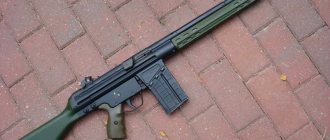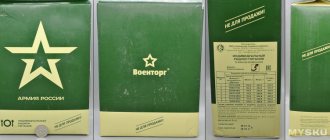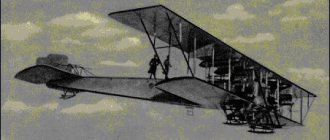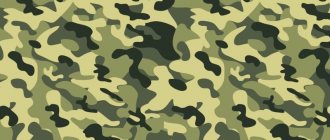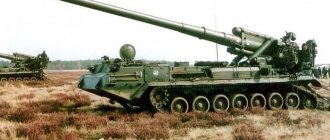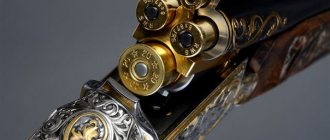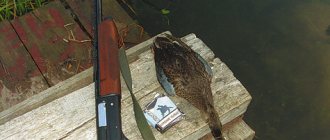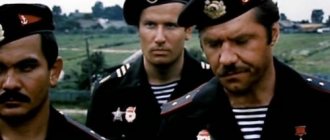Different countries had different approaches to camouflage uniforms. Firstly, camouflage patterns change over time, improving protective functions and adapting to different types of terrain. Secondly, different types of troops have different camouflage.
Successful samples do not always continue to exist. For example, the border camouflage “birch” was removed from service and remained only in reconnaissance camouflage kits. Various versions of the “birch” can be purchased in stores specializing in camouflage for hunting, fishing and airsoft.
Let's look at the types of camouflages, both currently used and in historical perspective.
Classic. Historical basic camouflage colors
Khaki
The progenitor of all modern camouflage.
Basic color of protective clothing. It first appeared in service with the British Army in 1896.
The Americans adopted the British experience and dressed their army in khaki by 1899.
Khaki is the basic field camouflage color and is used as the basis for the development of almost all types of camouflage clothing. This color is also used by default for painting surfaces, weapons, and objects.
Amazingly, the style called “mud”, which is how the word khaki is translated from Persian, has conquered not only the trenches, but also the catwalks of high fashion and has stubbornly maintained its position throughout the century. In fashion, there are varieties of the use of khaki color - safari style - with patch pockets, wide belts and fitted silhouettes, and military style - an aggressive style that hides the outlines of the body.
Olive (Olive Green)
Olive.
Also considered a classic camouflage pattern. Deeper color compared to khaki. While khaki is adapted to the desert, Olive Green has a broader application profile. Used by the US Army in World War II, the Korean and Vietnam Wars.
Along with khaki, olive is widely used in the fashion industry, in the field of design, especially relaxation design. Often used in good medical and rehabilitation sanatoriums.
“Black” version (dark gray), black camouflage with a slight smoky tint.
Black camouflage can also be used for intimidation. A kind of advanced cinematic ninja camouflage.
Navy Blue
The classic camouflage pattern , originally named marine blue, has been used since 1748 by the British Navy. The blue color of the naval uniform was subsequently borrowed by many countries around the world and was reflected in uniforms, workwear and even school uniforms.
| Snow camo “Snow” camouflage. Widely used by special services for field reconnaissance. Camouflage is designed for special military units, reconnaissance and special forces in the Arctic, Antarctic and for operations in the winter season. |
| Brushstroke, Denison camo This type of “brushstroke” camouflage was created in Britain and was used in various countries around the world until 1960. Depicts multidirectional broad brush strokes on a khaki base. Used mainly in tropical and Asian countries. It became the basis for the “brushstroke” camouflages of lizard, tiger, and knight. |
Soviet Union, Russia
| KZS . 1975-76 Anti-radiation protection mesh camouflage with digital pattern. Currently out of print. The fabric was impregnated with special substances that prevented combustion. A spacious mesh camouflage suit was worn over the uniform. After use, the suit was not reused, but was buried or burned. Scope of application: reconnaissance, army. |
| Oak, butane 1984. Army camouflage. Initially developed for airborne forces and landing forces. Three-color forest camouflage. Currently used in aviation and airborne units. Also used in various modifications for tourist clothing. In many respects it coincides with the American Woodland camouflage pattern. |
| Flora and digital flora (simulating two-color pixel layout). Three-color army camouflage, which replaced the “butane” one. Currently in use. Features a more dynamic silhouette. The color is also called “watermelon”. |
| Birch tree , gold leaf, silver leaf, sunbeam, border guard. Legendary camouflage with a pattern that imitates the play of light in foliage. Developed for border troops. Subsequently used in reconnaissance and airborne units. In the West, the pattern is known as “KGB camouflage.” |
| Palma . Camouflage pattern from 1944. Tropical vegetation. Demonstrates the breadth of views of the Soviet leadership. Camouflage was used in reconnaissance and sabotage units of the Second World War. |
| Amoeba . 1935 Two-tone camouflage with an amoeba-like breaking pattern. When moving, the contours of the figure blur, like an amoeba. An interesting visual effect, despite the apparent simplicity of execution. |
| Knight , "reed". Camouflage developed for special purpose troops of the Ministry of Internal Affairs. Variations of the “tiger” camouflage, which is reflected in the name, which clearly refers to the “Knight in the Tiger Skin”. There are winter and summer options. Can be used both in urban and field conditions. |
| VSR-93 , “vertical”. Combined arms camouflage 1993. |
Modern Russian camouflages are freely available
|
|
|
Britannia
Britain is the founder of industrial army camouflage.
The prototypes of many camouflage patterns were developed in Britain. The blue uniform of sailors, khaki, olive, brush stroke camouflage for desert areas - all these are inventions of the British. Disruptive Pattern Material (explosion, splash of texture) is one of the main camouflages based on strokes of various directions. This type differs from the classic brush stroke camouflage with a “wide brush” by being more chaotic and uneven in the width of the stroke.
Features of materials for sewing
A high-quality suit “works” in difficult conditions: hot, cold, pouring rain. The highest demands are placed on the main material used for manufacturing. The best manufacturers use lightweight and breathable composites made from natural fibers. However, how much the kit costs depends on the type of base.
The most commonly used tent fabric is cotton. Rip stop is also used - 50% cotton, 50% polyester - a quick-drying material that enhances the protective properties of the suit. Popular models for winter or mid-season periods are complemented by a fleece lining. The filling for budget items is padding polyester or holofiber; for more expensive suits, modern membrane fabric is used. The lining is artificial silk - tafetta.
Germany, Wehrmacht, GDR, Federal Republic of Germany
| Rauchtarnmuster Camouflage, ideal for deciduous and coniferous forests in summer and autumn. There was a separate option for spring. An experimental batch of double-sided camouflage was also released, with a different pattern on the reverse side. Used in SS assault brigades. |
| Splittermuster, WH splintertarn. The first German army camouflage. 1931 Camouflage is also called “fragmented” or “broken glass”. One of the neatest camouflages in the world. Color spots of four colors, approximately the same shape and size, were applied at equal intervals. |
| SS – Eichenlaubmuster, WH eichentarn. “Oak” camouflage as interpreted by the Wehrmacht. The drawing was created for the Waffen-SS. Known in variations: 6 colors (burgundy, black, olive, green, brown on basic khaki) version of 1942. There is also a variant using 5 colors - with the exception of burgundy. |
For each camouflage option, winter and summer color options were provided.
| SS-Erbsenmuster, getarnter Drillichanzug. A simplified version of the Wehrmacht camouflage pattern of March 1944. Universal colors, without division into winter and summer. Suits and overalls of this color were sewn using common oversized patterns. The camouflage pattern was adjusted to fit the figure on site. A special decree approved the requirement for each serviceman to have at least 2 items of camouflage colors. |
| GDR DDR-Russisches Tarnmuster. The first camouflage of the GDR army in the “Russian style”. Used approximately from the 40s until 1958. There are 2 modifications. Brown spots and brown spots with a black outline. |
| Strichtarnmuster, NVA strichtarn , “rain” Camouflage of the GDR army from 1965 to 1990. It is a simplified variation of the Splittermuster camouflage. Brown stripes based on khaki. |
| NVA flachentarn, Blumentarn , “floral” camouflage. Used in the internal troops of the GDR from 1950 to 1967. It is based on Splittermuster with spots blurred along the edges. |
| BW flecktarn . This designation covers a whole class of fairly successful camouflage patterns. Derived from the words fleck (spot) and Tarnung (camouflage). In translation, flecktarn is a camouflage based on random spots. Originally called Flecktarnmuster, developed in the 70s. |
Used by German troops in the 80s. A distinctive feature of camouflage is the size of the details. Camouflage spots are small in size. There are variants with a predominance of black-brown or green and olive colors.
| Tarnmuster, Amoebatarn. An improved version of Splittermuster, complemented by an amoeba-like pattern. |
| BW tropentarn . One of the new desert camouflages of 1990. Breaking up the silhouette with random spots on a khaki background. |
Variety of fabrics for the production of summer camouflage suits
The following types of fabric are often used for summer camouflage clothing:
Oxford
Classic synthetic fabric, which consists of nylon and polyester. It has a square weave when the threads are woven together in the shape of squares. The main advantages of the fabric are durability, strength and water resistance, as well as resistance to chemical compounds. The material retains heat well and does not allow cold air to pass through.
Protective fabric
For your information! The fabric depends on the thickness of the threads and is divided into types from 210D to 600D. It is used to make clothes, shoes and military backpacks.
When washing, it is advisable to monitor the water, the temperature of which should not be higher than 50°C. It is better to choose cleaning products special for synthetic fabrics. When washing in a machine, you should set it to delicate; it is better to avoid spinning. You can dry things by hanging them on hangers. Then they don't need ironing.
Oxford material
Rip stop
The fabric contains polyester reinforced thread and cotton particles. Lattice-type weaving makes the fabric resistant to mechanical defects, that is, it will not unravel at the edges. This fabric hardly wrinkles, and also does not shrink with each wash. Wear-resistant and durable. It is advisable to wash at a temperature of about 40°C in hand wash mode. Can also be dried on hangers, no ironing required.
Greta fabric
The composition includes polyester and cotton. Due to the special type of weaving, the cotton thread is located on the inside of the material, and the synthetic thread is located on the outside. Greta has high wear resistance, retains heat well, and absorbs moisture well. It is advisable to wash at a temperature not exceeding 60°C. If this number is higher, the item will instantly lose its properties. The ideal mode is hand washing. Spin should not be higher than 600 rpm. Drying should be in a vertical position, and ironed only from the inside out.
Greta fabric
Fleece
To create this camouflage fabric, polar fleece fiber is used, which is 100% polyester. The fabric is created in such a way that there are air chambers in its structure. This fabric is hypoallergenic, lasts a long time, is pleasant to the touch, and does not shrink when washed. Wash only in synthetic mode, spin up to 600 rpm. Dry vertically. The material does not wrinkle, so there is no need to iron it.
You may be interested in this. What to do if a woolen item shrinks: stretch and turn the shape of the sweater
Shirt fabric
This is a mixed type of fabric made from polyester and viscose. It washes well, is soft to the touch and does not cause skin allergies. Caps and bandanas are also made from this fabric. Can be washed in warm water no higher than 70°C. Preferably in synthetic or cotton mode. When spinning, set it to no more than 1000 rpm. Ironing must be done in the same modes as washing.
Mixed material
Membrane
Membrane fabric does not hinder movement and protects well from rain, drafts and frost. Moisture from the body will escape, making the first layer of fabric dry. Wash carefully at a temperature not exceeding 40°C. It is better to rinse two or three times and avoid spinning. You need to dry it in a horizontal position, away from heating appliances.
Tarpaulin
A fairly dense and coarse material, which is created from thick yarn. The composition includes threads made of jute and cotton. The main characteristics of this fabric are strength and resistance to mechanical damage (cuts and tears). The fabric is wear-resistant and does not allow moisture to pass through. It is quite difficult to wash it, since water makes the material heavy and rough, which can also disrupt its impregnation.
Note! It is better to wash by hand using soap and a brush, and dry in a horizontal position.
Fabric tarpaulin
Avizent
Also called aircraft tarpaulin. This is a heavy material that is used for the production of awnings and high-strength equipment. It is highly resistant to mechanical damage and tearing. Caring for the fabric is exactly the same as for tarpaulin.
Basic US camouflages
Woodland. The most common US camouflage pattern. Developed in the mid-80s. Available in 4 basic versions. Currently in army units it is replaced by MARPAT.
|
| 3-color desert. Desert three-color camouflage. The Airborne Forces were actively used in Afghanistan and Iraq. Was replaced by the more successful MARPAT camouflage |
| 6-color desert, Chocolate Chip, chocolate bar. Wave-like soft pattern in brown tones with imitation of small stones. Currently not used in the US Army, but this camouflage is actively supplied to “friendly” US units. |
| Digital woodland . Digital forest. The main camouflage of the US Army at the moment. A very good option for camouflage painting. No worse than “birch” - the best camouflage of the USSR. There are three main variants of MARPAT camouflage - forest, desert and urban. The color mixing algorithm is preserved, the color balance and the ratio of the number of spots of the base color change. |
| Digital desert . Digital desert. A variation of MARPAT in which the olive base is replaced with basic khaki. A variant of “digital” camouflage for the desert. |
| AT-digital . Three-color camouflage based on MARPAT. The colors used are khaki, olive and brown. |
| Multicam . Modified Woodland (a discontinued type of camouflage) used by commercial firms and security agencies. Good camouflage, but the developers overcomplicated the pattern, which led to a decrease in camouflage properties. |
All kinds of tests
The art of testing these patterns is almost always more important than the design itself—a process Kramer knows well, having spent a decade helping the Army test patterns. This includes confusing the army's best snipers with thousands of photographs.
At the US Military Academy at West Point, subjects, including top snipers with perfect or better vision, viewed slide after slide of camouflaged soldiers in different environments. A huge number of images. From deserts to swamps, any weather conditions, any distance to the target (the pattern should be equally good). Statistics showed that there were 900 subjects, 45 environments, and 120,000 data points.
An important part of the testing process was not only the speed of identifying a visual anomaly, but also the speed of determining the location where the soldier was actually lying. Milliseconds of decision making can make a difference, given that the average sniper takes 12 to 30 seconds to identify a target.
Canada camouflage
| CADPAT. Modification of MARPAT digital camouflage. There is debate as to who exactly was the first to come up with this type of camouflage. Let's not insist. Perhaps MARPAT is a modification of CADPAT. Perhaps it's the other way around. The principle of constructing camouflage colors is the same. |
| JACKET, GARRISON, LAND , Canadian forest camouflage. Suitable for both deciduous and coniferous forests. |
| Duck hunter The glorious translation of "The Duck Hunter". Camouflage for hunters. It consists of large spots of color on olive or khaki. Sold in sporting and hunting stores. It is good because it is able to provide relative invisibility for animals, but the hunter remains visible to people, which is especially important when hunting. |
Features of protective clothing
Thanks to its characteristics, camouflage moved from military uniforms into everyday life and acquired additional comfort to wear. It now has many pockets and other features important to the functionality of the suit.
Camouflage has a number of undoubted advantages:
- made from natural dense fabrics with special impregnations, which allows air to circulate freely and maintain an optimal microclimate without overheating or overcooling the body;
- loose and comfortable fit - does not restrict movement in the heat, during physical work, in the cold it is possible to wear an additional layer of thermal underwear to retain heat;
- practical and wear-resistant fabric - non-staining, easy to machine wash, dries quickly;
- A variety of colors and different functionality allows you to choose a form option that is most suitable for solving the problem.
Camouflages of China
Number. Pixel art is widespread and used in almost all armies of the world. Due to its high adaptability to any surface and ease of reproduction of patterns in any color range, it is in high demand.
New modifications of digital camouflage are constantly being developed.
flecktarn "spots" in the Chinese modification. Green protective camouflage was adopted as a combined arms pattern with virtually no changes, and was also used for border and internal troops.
khaki-dominant desert version In general, the Chinese army copies the successful colors of other countries.
